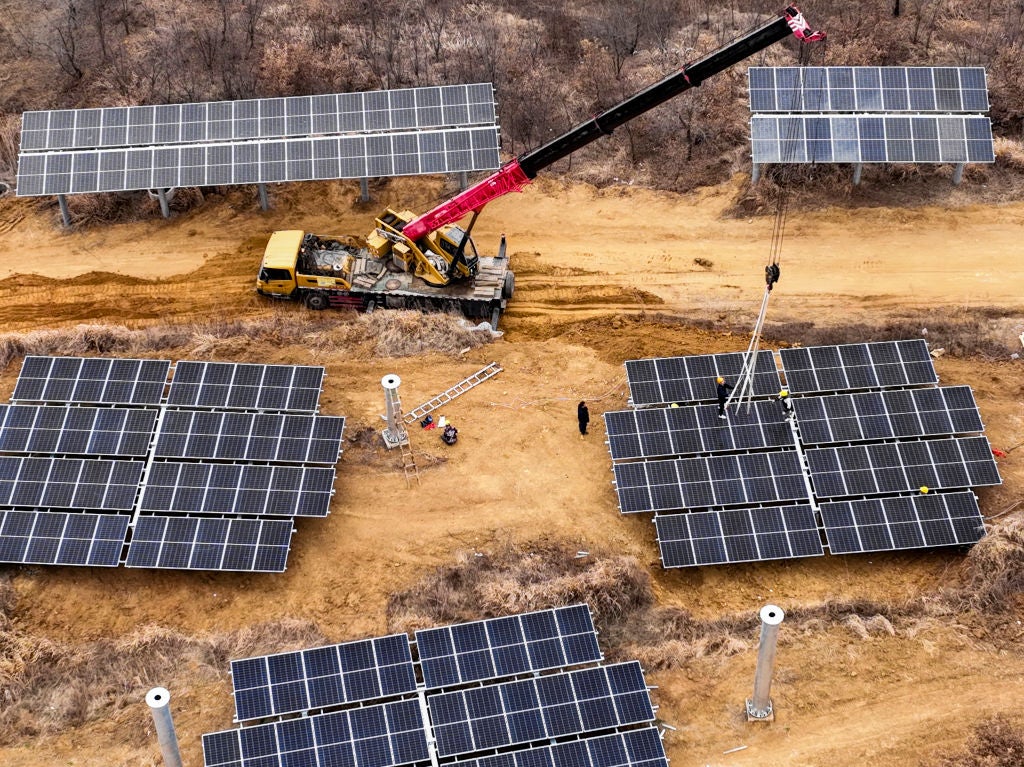March 2022 marks two years since the World Health Organization declared Covid-19 a pandemic, and in that time the global energy system has been buffeted by an unprecedented series of shocks. First, national lockdowns around the world led primary energy demand to decline by 4.5% in 2020, shows BP’s Statistical Review of World Energy. Then, a faster-than-expected economic recovery in 2021 combined with natural gas supply problems to create an energy crisis – a crisis now exacerbated by the fallout from Russia’s invasion of Ukraine.
The most painful impact of all of this is soaring energy prices for consumers. In the longer term, there are also concerns that the political consensus on net zero is threatened. In the UK, for example, the right-wing press now regularly extolls the virtues of fracking to bolster the country’s energy security, while certain politicians are calling for a referendum on net zero.

Such calls are illogical. Doubling down on fossil fuels means we will continue to be at the whim of fluctuating prices and the autocratic regimes that control much of the fossil fuel market, and while some rightly point out that aiming for net zero comes at a cost, that cost will be nowhere near as much as the cost of unabated climate change.
In a report published last year, reinsurance giant Swiss Re calculated that global GDP will be down 11–13.9% compared with a world without climate change, if the average global temperatures rise 2–2.6°C above pre-industrial times by 2050. The global warming of around 1.2°C is already causing economic havoc, with devastating floods in Australia and Germany among the severe climate events to have hit the headlines in recent months.
To avoid this long-term economic depression, and to reduce our vulnerability to future energy system shocks, there is one clear solution: boosting clean energy investment.
Energy investment is declining
Energy systems’ vulnerability over the past two years is evidence that governments have not invested sufficiently or effectively. If, for example, we had more energy-efficient buildings, and had transitioned faster to renewables – as scientists have been calling for for decades – we would not be so vulnerable to soaring oil and gas prices.
Data shows how underfunded our energy systems really are. Global investment in energy fell each year between 2016 and 2020, according to the International Energy Agency (IEA). Electricity investment, for example, fell from $800bn in 2016 to $760bn in 2019, before plummeting to $680bn in 2020 during the Covid-19 pandemic.
Investment rebounded by around 10% in 2021, but “much greater resources have to be mobilised and directed to clean energy technologies to put the world on track to reach net-zero emissions by 2050", said IEA chief Fatih Birol.
The IEA’s Net Zero 2050 Roadmap says total energy investment will have to surge from the current annual rate of $2.3trn to $5trn by 2030. Similarly, the International Renewable Energy Agency (IRENA) projected in 2021 that energy spend over 2021–50 must increase from $98trn to $131trn.
A taste of things to come
As governments and companies begin to plan how they will meet their net-zero pledges, spending will of course increase. However, the energy transition itself also creates the risk of shocks to the system, which could themselves threaten the transition's progress. The way to mitigate this risk is to ensure the transition is not simply led by the whims of the market, but that public financial support is offered when needed.
“We need to spend in order to hedge against the risk of massive disruptions, costs and unforeseen issues, all of which the energy transition is very likely to present to us,” explains Saad Rahim, chief economist at commodities giant Trafigura.
“It is no use just investing in renewables, you have to spend so much more on every aspect of the value chain, and that includes investing to accelerate coal closures, building more renewables, and still investing in enough oil and gas to ensure we don’t have a situation where oil prices soar to $200 – and immediate spending on energy cannibalises all available funds for the energy transition.”
Addressing inequalities
Any discussion about increasing energy investment must also acknowledge the massive spending inequalities that exist across the world. Emerging markets and developing economies account for “nearly two-thirds of the global population but only one-third of global energy investment and just one-fifth of clean energy investment”, says the IEA in its most recent Energy Investment Outlook.
Think tank the Climate Policy Initiative finds that, over the period 2019–20, three-quarters of global climate investments – which includes spending on both adaptation and mitigation – were concentrated in East Asia and the Pacific, western Europe and North America, while the rest of the world received less than a quarter.
Politicians must work to address these inequalities, using fora like the upcoming COP27 climate conference to establish a comprehensive, well-funded framework that can both help countries reach net zero and ensure energy needs are met. Investment mechanisms, such as the $8.5bn plan to phase out coal in South Africa, announced at COP26, must be replicated across the world to provide countries with both a lucrative and sustainable development pathway.
[Keep up with Energy Monitor: Subscribe to our weekly newsletter]
The energy transition is now an inevitability; the rapidly declining cost of storage, renewables and other clean technologies means market forces will ensure it takes place. However, we will need comprehensive and well-financed plans to ensure the transition happens fast enough, and in a way that shields citizens as much as possible from the volatility that will accompany it.
The experience of the Covid and Ukraine crises disrupting our energy systems after years of underinvestment should be a cautionary tale for politicians.




